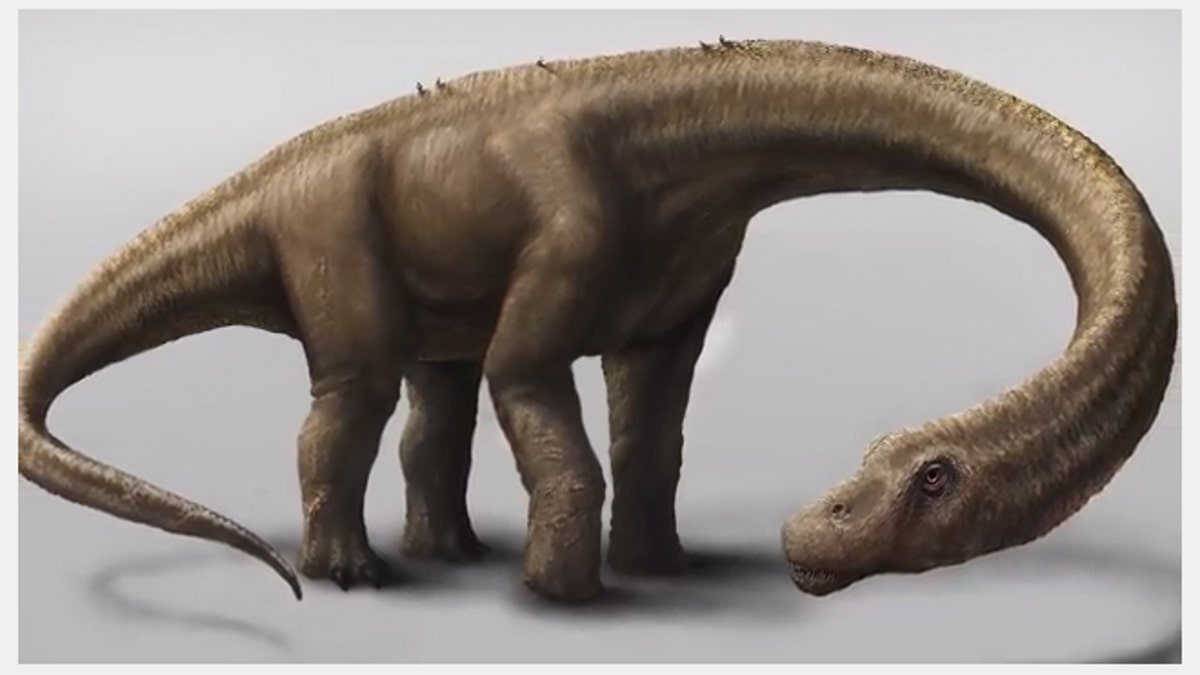
(YouTube)
Weighing in at 130,000 pounds, 30 feet tall and 85 feet long, ladies and gentlemen you’re heavyweight champion of the dinosaur world: the Dreadnoughtus.
An empty 737 airplane weighs 93,000 pounds.
The fossilized remains of this colossal creature were discovered in the Patagonia region of Argentina by a team led by Kenneth J. Lacovara, a paleontologist at Drexel University in Philadelphia. The Dreadnoughtus, which means "fear nothing," is the first of this species and most complete ever found of this group of dinosaurs known as titanosaurs.
“What we can say with certainty is this is the biggest land animal that we can actually put a number on,” Lacovara told the New York Times. “We’ve got 16 tons of bone in my lab right now.”
Just for comparison sake, the Dreadnoughtus’ more famous relative, the Brachiosaurus, weighed only 75,000 pounds — 37,000 pounds less than the newly discovered titanosaurs.
The Dreadnoughtus, a plant-eater, takes the championship belt for the largest dinosaur thanks in large part to the massive number of intact bones that researchers were able to unearth while excavating in Argentina.
While some scientists theorize that the Argentinosaurus, whose vertebrae along the backbone are larger than those of Dreadnoughtus, is the largest dinosaur ever, the number of crucial bones needed to properly estimate its mass still remain elusive. On the other hand, researchers were able to come across 45 percent of Dreadnoughtus’ bones, including the thigh bone, more than 6-feet tall, which allowed researchers to precisely calculate of how much the behemoth weighed and to conclude that if the dinosaur fell over it wasn’t getting back up.
“If you look at its really big ribs, there's no way they're going to withstand 65 tons of weight on top of them,” Lacovara told the Washington Post.“It would have been a catastrophic event in the life of a Dreadnoughtus if it fell over.”
Luckily for the big guy, its 37-foot long neck let the giant herbivore reach high treetops so it didn’t need to move around too much. A good thing because one needs to eat a lot to support a metabolism for a 130,000 pound creature.
“How do you come up with a body size that is so enormous when you're a terrestrial animal?” Luis Chiappe, director of the National History Museum of Los Angeles's Dinosaur Institute, told the Washington Post. “You need to have a structural design that allows you to support a body like that, and you have to be potentially adapted to eat 24 hours a day, nonstop, with a minimal amount of sleep.”
Researchers working on the dig in Argentina also added that the fossils discovered may not be from an especially large Dreadnoughtus, in fact it may have been just an adolescent and had yet not reached its full-grown size when it died, sometime between 84 million and 66 million years ago.
“With Dreadnoughtus, there's no indication that there was any cessation or slowing of growth [in the bones],” Lacovara said. “When it died at 65 tons, it was growing fast, which is kind of scary.”
Follow us on twitter.com/foxnewslatino
Like us at facebook.com/foxnewslatino
